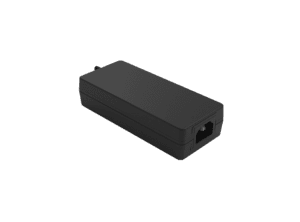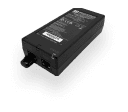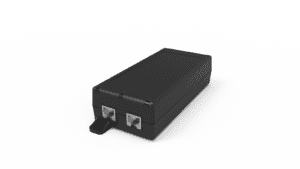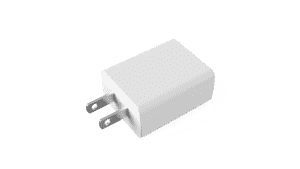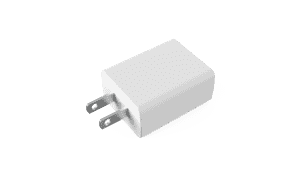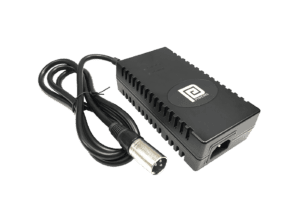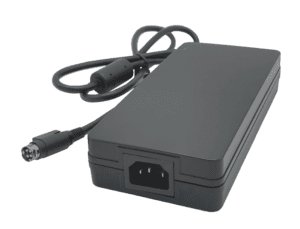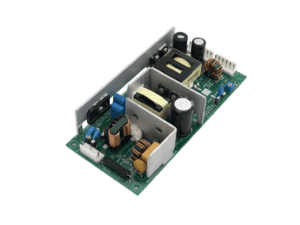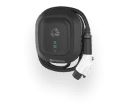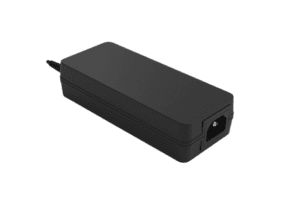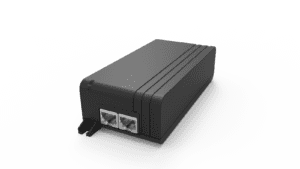BLOG
Internal Power Supply: Everything You Need to Know
Table of contents

Open frame internal power supply units (PSUs) are specialized devices that are designed without an enclosed housing. Unlike traditional enclosed power supplies, open frame designs leave the internal components exposed, allowing for better airflow and integration into devices where space and cooling are critical. These PSUs are commonly used in applications where efficient power delivery is required, but a fully enclosed housing is unnecessary.
In this article, we will explore the fundamentals of internal power supplies, including their key components, advantages, and common applications. We will also discuss how Phihong’s PSUs differ from others on the market and how Phihong can design customized solutions for your OEM business.
Advantages of an Internal Power Supply
Cost-Effectiveness
One of the primary benefits of an internal power supply is their cost-effectiveness. The absence of a housing reduces manufacturing costs significantly, which can be passed on to consumers. Moreover, the simpler design and fewer materials used in construction can result in lower shipping costs and reduced environmental impact. As industries seek ways to cut costs and enhance profitability, internal power supplies offer a viable path for cost-effective solutions without compromising on quality.
Cooling Efficiency
Cooling efficiency is a crucial factor in the performance and longevity of power supplies. Open frame PSU designs inherently allow for superior cooling capabilities due to increased airflow around the components. The absence of a case means that heat generated during operation can dissipate more effectively, preventing overheating.
In many electronic applications, particularly those involving high power loads, maintaining optimal operating temperatures is vital. Internal power supplies often utilize additional cooling mechanisms, such as heat sinks and fans, to further enhance cooling efficiency. This design consideration results in improved reliability, as components operate within safe temperature ranges, extending their lifespan and reducing the likelihood of failures.
Compact Design
The compact nature of an internal power supply allows for easy integration into various devices, making them suitable for applications where space is at a premium. Their small size makes them ideal for embedded systems, telecommunications equipment, and consumer electronics, where a large power supply might not fit.
Partnering with Phihong as your internal power supply manufacturer enhances flexibility in your design, allowing you to tailor it to meet your specific OEM needs. Our engineers can customize the size, power output, and mounting options to ensure a perfect fit for your OEM electronic devices within your design constraints.
Disadvantages of an Internal Power Supply
Exposure to Environmental Factors
One of the key drawbacks of open frame internal power supplies is their vulnerability to environmental factors. Without an enclosure, components are more exposed to dust, moisture, and other contaminants, which can lead to premature degradation or failure. In industrial settings or harsh environments, this exposure can significantly reduce the reliability and longevity of the power supply. Protective measures, such as proper casing, are required to mitigate this risk.
Restricted Use
Finally, open frame PSUs may not be suitable for all applications due to regulatory or safety standards. Many industries, such as healthcare or aerospace, have stringent requirements for shielding, protection, and safety, which open frame power supplies might not meet without strict modifications.
Common Applications of an Internal Power Supply
Industrial Equipment
Internal power supplies are widely used in industrial applications, powering machines and equipment that require reliable performance under demanding conditions. Their robust design can withstand vibrations and temperature fluctuations typical in industrial settings, ensuring continuous operation.
In factories, an internal power supply is in everything from robotic arms to assembly line equipment. Their efficiency and ability to handle high loads make them indispensable in modern manufacturing processes, where downtime can lead to significant financial losses.
Consumer Electronics
Many consumer electronics, such as gaming consoles, audio equipment, and smart home devices, utilize an internal power supply for their compact designs. The ability to customize power requirements makes them suitable for a wide range of electronic devices, allowing manufacturers like Phihong to work with OEMs to custom create innovative products that meet consumer demands.
Medical Equipment
In the medical field, reliable power is crucial for ensuring the functionality of diagnostic and treatment equipment. Power supply manufacturers like Phihong specialize in customizing medical equipment for medical power supplies and medical devices. An internal power supply is often employed in medical devices like imaging systems, patient monitoring equipment, and laboratory instruments.
Medical devices must comply with stringent safety and performance standards, making the reliability and robustness of internal power supplies is vital in these applications. Additionally, their compact design can aid in creating more portable and user-friendly medical equipment.
Key Components of Internal Power Supplies
Transformers
Transformers are essential components in an internal power supply, it’s responsible for stepping down voltage levels to meet the power requirements of various devices. They play a critical role in energy conversion, allowing for efficient operation and ensuring that devices receive the appropriate power without risking damage from overvoltage.
Different types of transformers can be used in open frame internal power supplies, including toroidal and laminated transformers. Each type has its benefits, such as improved efficiency or reduced electromagnetic interference (EMI), and the choice often depends on the specific application and design requirements.
Rectifiers
Rectifiers are used to convert alternating current (AC) to direct current (DC), a necessary process for most electronic devices. Open frame PSUs typically utilize silicon or Schottky rectifiers for improved efficiency. Schottky rectifiers, in particular, are favored for their low forward voltage drop, resulting in lower power losses and higher overall efficiency.
The choice of rectifier technology can significantly impact the performance and efficiency of the internal power supply, making it a critical design consideration.
Capacitors
Capacitors play a vital role in stabilizing voltage levels within the PSU, storing and releasing electrical energy as needed. High-quality capacitors enhance performance and reliability, particularly under varying load conditions. Open frame PSUs often utilize electrolytic capacitors for bulk energy storage, while ceramic capacitors can be used for filtering and decoupling.
The lifespan and performance of capacitors can directly affect the overall reliability of the PSU, making it essential to select components that meet the specific needs of the application.
Cooling Solutions
Effective cooling is essential for open frame PSUs to prevent overheating and ensure reliable operation. Many units incorporate fans or heat sinks to dissipate heat generated during operation. Proper airflow design is crucial to maintaining optimal operating temperatures and preventing thermal-related failures.
Some advanced internal power supplies may also use active cooling solutions, such as temperature-controlled fans, to optimize cooling based on the load conditions. This adaptability helps improve energy efficiency and prolongs the lifespan of the internal power supply.
Protection Circuits
Protection circuits are essential for safeguarding internal power supplies from electrical faults that could damage components or connected devices. These circuits typically include overvoltage protection (OVP), overcurrent protection (OCP), and short-circuit protection (SCP).
Incorporating robust protection mechanisms is vital, especially in environments where equipment may be exposed to unpredictable power conditions. Effective protection circuits enhance the reliability and safety of the power supply, ensuring continuous operation even in challenging conditions.
Internal Power Supply Certifications, Standards, and Requirements
Internal power supplies must adhere to various certifications and standards to ensure safety, performance, and reliability. Here, we’ll discuss some key standards and requirements that these power supplies undergo.
UL Standards
Underwriters Laboratories (UL) standards are critical for ensuring safety in electrical devices. For power supplies, UL certification verifies that the product meets rigorous safety standards to prevent electrical hazards such as shock and fire. Key UL standards relevant to internal PSUs include:
- UL 60950-1: This standard focuses on the safety of information technology equipment, including power supplies.
- UL 62368-1: A newer standard that combines the requirements of audio/video equipment and IT equipment, emphasizing the importance of both safety and functional performance.
CB Scheme
The IEC CB Scheme provides a mechanism for manufacturers to obtain safety certification for their products across multiple countries. This international system allows for easier market access, as a single test can satisfy the requirements of several national standards. Key aspects of the CB Scheme for internal power supplies include:
- IEC 60950-1: Similar to UL standards, this focuses on safety for information technology equipment.
- IEC 62368-1: This newer standard is also recognized globally, ensuring that power supplies meet comprehensive safety and performance criteria.
Electromagnetic Interference (EMI) Standards
EMI standards are crucial for ensuring that power supplies do not interfere with the operation of other electronic devices. Open frame PSUs must comply with various EMI regulations to minimize emissions and maintain performance. Key EMI standards include:
- CISPR 22: This standard sets limits on the electromagnetic emissions from information technology equipment.
- EN 55032: This standard applies to multimedia equipment, ensuring that power supplies do not produce excessive noise that can affect other devices.
Efficiency Standards
Efficiency standards ensure that power supplies operate effectively, minimizing energy waste. Compliance with these standards can also lead to reduced operational costs. Some important efficiency standards for internal PSUs include:
- Energy Star: While primarily focused on consumer products, Energy Star certification promotes energy efficiency across various devices, including power supplies.
RoHS Compliance
The Restriction of Hazardous Substances (RoHS) directive limits the use of specific hazardous materials in electrical and electronic equipment. Internal power supplies must comply with RoHS to ensure they are environmentally friendly and safe for disposal. Key materials restricted under RoHS include:
- Lead
- Mercury
- Cadmium
- Certain flame retardants
Safety and Reliability Testing
In addition to the aforementioned certifications, internal power supplies undergo extensive safety and reliability testing. This includes:
- Temperature and Humidity Testing: Ensuring the PSU operates reliably under various environmental conditions.
- Burn-In Testing: Running the PSU under load for an extended period to identify potential failures early in the product lifecycle.
These certifications and standards play a vital role in ensuring that internal power supplies meet safety, performance, and reliability requirements, making them suitable for a wide range of applications.
Key Advantages of Phihong’s Internal Power Supplies
Phihong’s internal power supply is designed to cater to a wide range of applications, offering several critical benefits that make them a compelling choice for OEMs and system integrators. Here’s an in-depth look at why Phihong’s open frame PSUs stand out:
Cost-Effective Power Solutions
Phihong’s internal power supplies deliver high performance at competitive prices, making them ideal for cost-conscious applications without compromising reliability or efficiency. They strike the perfect balance between affordability and durability, making them an excellent choice for budget-sensitive projects.
Cutting-Edge Technology
Phihong integrates advanced technologies such as Half Bridge Zero Voltage Switching (ZVS) and active boost power factor correction into their PSUs. These innovations improve efficiency by reducing energy loss, lowering overall operational costs, and lessening environmental impact. The result is a power solution that operates more efficiently, conserving energy while delivering robust performance.
Versatility with a Wide Voltage Range
Phihong’s internal power supply is designed for a wide range of global applications, operating at input voltages as low as 85V AC to ensure stable performance, even in areas with inconsistent power. This adaptability makes it a dependable option for various industrial and commercial environments worldwide.
Long-Term Reliability and Warranty
Phihong’s commitment to reliability is reflected in its 5-year warranty (subject to terms and conditions). This extended warranty provides customers with peace of mind, knowing that Phihong stands behind the durability and performance of its products. Phihong’s robust design ensures long-term functionality, reducing the risk of downtime and field failures.
Over 50 Years of Industry Leadership
With more than half a century of experience, Phihong has built a reputation for excellence in power electronic manufacturing. Our longstanding presence in the industry speaks to their commitment to producing high-quality, efficient products. Phihong’s wealth of experience ensures that their products are not only innovative but also reliable and tailored to the needs of modern OEMs.
High Efficiency and Regulatory Compliance
Phihong’s internal power supply meets and frequently exceeds global efficiency standards, including the rigorous DOE VI standards for the U.S. market. Phihong is also proactively preparing to comply with upcoming DOE VII standards, showcasing a commitment to energy efficiency. This emphasis on high efficiency not only lowers power consumption but also makes Phihong products a sustainable option for environmentally conscious projects.
Diversified Manufacturing and Risk Mitigation
Phihong has diversified its manufacturing operations, including facilities in Vietnam, which help OEMs reduce their reliance on Chinese manufacturing. This diversification mitigates risks associated with geopolitical tensions, trade tariffs, and production disruptions, providing a more stable supply chain. By sourcing from Vietnam and other global locations, Phihong helps OEMs maintain consistent production timelines and avoid potential delays caused by international trade issues.
U.S. Inventory and Faster Lead Times
With a dedicated inventory hub in Fremont, California, Phihong ensures faster lead times for U.S. clients, particularly those in high-demand sectors such as telecom, datacom, and consumer electronics. Located in Silicon Valley, this facility allows for quick access to inventory and reduces shipping delays, providing a distinct advantage for OEMs with tight production schedules.
U.S. R&D and Local Expertise
Phihong’s research and development centers in California and New York offer OEMs the benefit of close proximity to engineering teams that understand the U.S. market and regulatory environment. This local expertise allows for faster product development and testing, as well as easier compliance with U.S. standards. OEMs benefit from real-time collaboration with Phihong’s R&D teams, reducing time zone challenges and improving communication efficiency.
U.S. Customer Support for Enhanced Responsiveness
Phihong’s U.S.-based customer support team is readily available to assist with product inquiries, troubleshooting, and technical support. With local application engineers and customer service representatives, Phihong offers faster response times and eliminates language barriers, providing a seamless experience for U.S.-based OEMs. Phihong’s support line operates Monday through Friday from 9:30 AM to 6:30 PM PST, ensuring that customers can easily reach knowledgeable experts during business hours.
Conclusion: The Phihong Advantage
Phihong’s internal power supply units offer superior reliability, high efficiency, and cost-effectiveness. We collaborate with Fortune 500 companies to meet their specific customization needs for devices requiring internal power solutions. Whether you need an off-the-shelf power supply or a custom, private-labeled design, we are dedicated to providing tailored solutions for all your power supply requirements.
CLIENT'S QUOTE
Phihong's Power-Over-Ethernet solutions have transformed our network, boosting efficiency and reducing costs. Their seamless integration has simplified both installation and maintenance.
Explore More with Phihong USA
As we conclude our exploration of internal power supplies, it’s clear that this field is experiencing unprecedented growth. For over 50 years, Phihong has been at the forefront of innovation, serving Fortune 500 companies across various industries as a leading power supply manufacturer for OEMs.
In addition to custom power supply solutions, Phihong offers a diverse range of products, including:
- Power over Ethernet (PoE) Solutions: PoE injectors, splitters, media converters, and more
- AC/DC Adapters and Power Supplies: USB adapters, desktop adapters, industrial-grade power supplies, and more
- Battery Chargers: Chargers for lithium-ion and lead-acid batteries
- Medical Power Supplies: Specialized power supplies that meet stringent healthcare requirements
By partnering with Phihong USA, you are choosing a trailblazer in power technology. If you’re an OEM looking for a custom PoE solution or just looking for a quality product, call us today: 510-445-0100 or email us at usasales@phihongusa.com. We look forward to collaborating with you.


Contact Our Team Today!
Our dedicated sales team and international partners are prepared to support you with your latest projects and initiatives globally.
FAQ
What are open frame internal power supply units and how do they differ from traditional power supplies?
Open frame internal power supply units (PSUs) are specialized devices designed without an enclosed housing, which allows the internal components to remain exposed. This design contrasts with traditional enclosed power supplies that encapsulate their components within a case. The open frame design facilitates better airflow, enhancing cooling efficiency and making these PSUs suitable for applications where space is limited and optimal cooling is essential. This feature is particularly important in environments that require efficient power delivery without the need for full enclosure, allowing for integration into various devices while maintaining effective heat dissipation.

